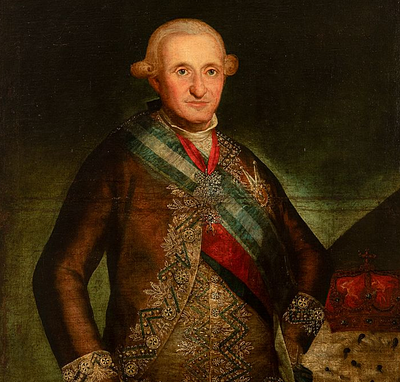Neapolitan school; late 17th century. "Immaculate Conception". Oil on canvas. Relined.
Lot 20
About Seller
Setdart Auction House
Carrer Aragó 346
Barcelona
Spain
Setdart Subastas was born in 2004 and is currently the first online art auction in Spain with solidity, prestige and reliability guaranteed by our more than 60,000 users. Setdart has a young, dynamic and enterprising team ready to successfully manage the purchase and sale of art works through custom...Read more
Estimate:
EUR€1,700 - EUR€1,900
$1,752.58 - $1,958.76
Absentee vs Live bid
Two ways to bid:
- Leave a max absentee bid and the platform will bid on your behalf up to your maximum bid during the live auction.
- Bid live during the auction and your bids will be submitted real-time to the auctioneer.
Bid Increments
| Price | Bid Increment |
|---|---|
| EUR€0 | EUR€10 |
| EUR€200 | EUR€25 |
| EUR€500 | EUR€50 |
| EUR€1,000 | EUR€100 |
| EUR€3,000 | EUR€200 |
| EUR€5,000 | EUR€500 |
| EUR€10,000 | EUR€1,000 |
| EUR€20,000 | EUR€2,000 |
| EUR€50,000 | EUR€5,000 |
About Auction
By Setdart Auction House
Sep 22, 2021
Set Reminder
2021-09-22 09:30:00
2021-09-22 09:30:00
America/New_York
Bidsquare
Bidsquare : 22nd September - ARAS JÁUREGUI Private Collection - Old Masters, 19th & 20th Century
https://www.bidsquare.com/auctions/setdart-auction-house/22nd-september---aras-j-uregui-private-collection---old-masters-19th-20th-century-7427
ARAS JÁUREGUI Private Collection - Old Masters, 19th & 20th Century Setdart Auction House sofia@setdart.com
ARAS JÁUREGUI Private Collection - Old Masters, 19th & 20th Century Setdart Auction House sofia@setdart.com
- Lot Description
Neapolitan school; late 17th century. "Immaculate Conception". Oil on canvas. Relined. It presents faults and repainting. Measurements: 67 x 52 cm. In this work the author captures a typically baroque image of the Immaculate Conception, Mary appears standing, dressed in a white tunic, although the mantle changes from the usual sky blue, to become an almost black colour. A very delicate halo, composed of the twelve stars representing the tribes of Israel, covers her head, with a high gaze. She stands on a pedestal of clouds, with a crescent symbolising in immaculist iconography the chastity of Diana and the Christian victory over the Muslims. It is an image of great clarity, alluding to Mary's victory over Original Sin. The figure stands out against a golden background, a break in glory enclosed by clouds of clouds worked with great illusionism, among which numerous child angels appear, most of them worked in golden tones, reflecting the divine light. The dogma of the Immaculate Conception defends that the Virgin was conceived without Original Sin, and was defined and accepted by the Vatican in the Bull Ineffabilis Deus of 8 December 1854. However, Spain and all the kingdoms under its political dominion defended this belief earlier. Iconographically, the representation takes texts both from the Apocalypse (12: "A great sign appeared in heaven, a woman wrapped in the sun, with the moon under her feet, and on her head a crown of twelve stars") and from the Lauretan Litany recited after the rosary and containing epithets of Mary taken from King David's Song of Songs. Combining the two texts and following an evolution that already began at the end of the Gothic period, we arrive at a very simple and recognisable typology that presents the Virgin on the lunar quarter, with the stars on her head and dressed in light (with a halo on her head only or on her whole body). The distinctive sign of the Neapolitan school has always been its strong naturalistic character, its warm colour, with reddish and chestnut dominating, and the cultivation, together with the altar painting, of a type of realist painting as its best exponent. In Naples, Ribera's influence was equal to or greater than that of Caravaggio. His naturalism, more sensual and material, more vigorous and vehement, less intellectual than Caravaggio's, eventually became permeable to Venetian and Flemish influences, becoming richer in colour and lighter in technique, especially from 1635 onwards. His most faithful disciples were the Fracanzano family, Cesare (1600-51) and Francesco (1612-56), Bartolomeo Bassante (1614-56), Paolo Domenico Finoglia (1590-1645) and some others who later cultivated special genres such as Aniello Falcone (1607-56), Salvatore Rosa (1615-73) and Luca Giordano. However, from the Baroque period onwards, the colours became softer and more nuanced, no longer opting for tenebrism, but retaining a great theatricality in the representations.
- Shipping Info
-
In-house shipping available. Please inquire at admin@setdart.com.
-
- Buyer's Premium



 EUR
EUR CAD
CAD AUD
AUD GBP
GBP MXN
MXN HKD
HKD CNY
CNY MYR
MYR SEK
SEK SGD
SGD CHF
CHF THB
THB
















